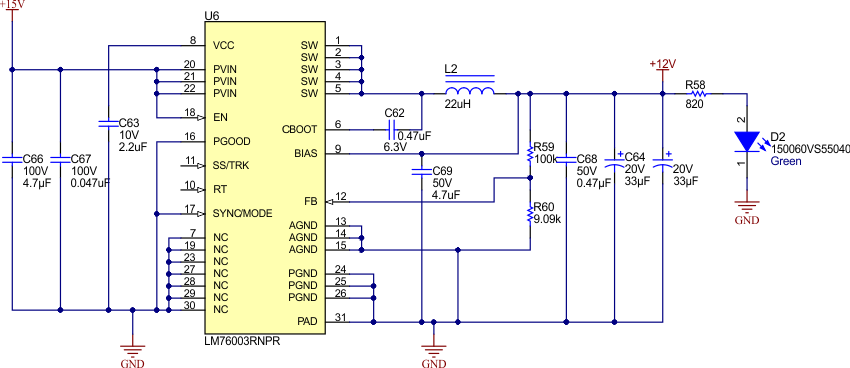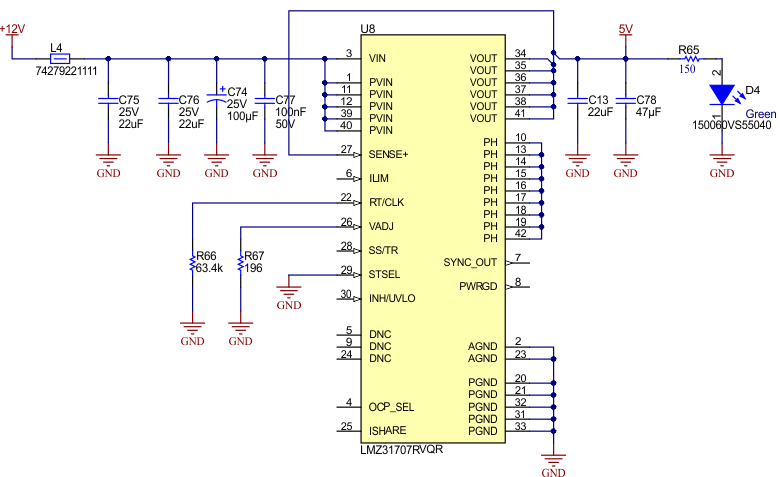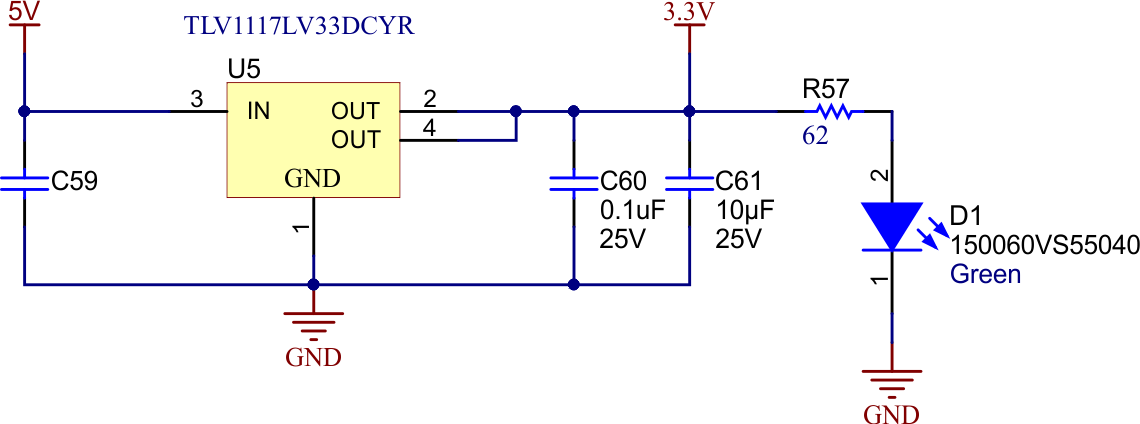JAJU732C June 2019 – July 2022
- 概要
- Resources
- 特長
- アプリケーション
- 5
- 1System Description
- 2System Overview
- 3Circuit Description
- 4Hardware, Software, Testing Requirements, and Test Results
- 5Design Files
- 6Related Documentation
- 7Terminology
- 8About the Author
- 9Revision History
3.4.1 Auxiliary Power Supply
The primary voltage for powering the auxiliary circuits is up to 50 V, which is given as input to the LM76003. The feedback resistors R59 and R60 are configured to provide an output voltage of 12 V. Figure 3-8 shows the LM76003 circuit.

Figure 3-8 LM76003 Circuit
This 12-V rail is used to for cooling fan control and it is further scaled down to 5 V with LMZ31707. The LMZ31707 SIMPLE SWITCHER® power module is an easy-to-use integrated power solution that combines a 7-A DC/DC converter with power MOSFETs, a shielded inductor, and passives into a low profile, QFN package. Figure 3-9 shows the LMZ31707 circuit.

Figure 3-9 LMZ31707 Circuit
The other rail voltage of 3.3 V is produced by using the TLV1117LV33. The circuit is shown in Figure 3-10.
 Figure 3-10 3.3-V Circuit
Figure 3-10 3.3-V Circuit